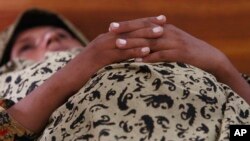Medical researchers have found that nearly all of the estimated 2.6 million stillbirths across the world last year occurred in low- and medium-income countries.
In a series of articles published Monday in the medical journal The Lancet, the authors found that sub-Saharan Africa had the highest rates of stillbirths in the entire world, as well as the slowest rates of improvement.
At that rate, according to the researchers, it will be more than 160 years before the average expectant mother in sub-Saharan has the same chance of delivering a living baby as a woman in a rich nation.
Of 186 countries measured, Pakistan had the highest rates of stillbirths at 43.1 per 1,000 total births, followed by nine sub-Saharan countries — Nigeria, Chad, Niger, Guinea-Bissau, Somalia, Djibouti, Central African Republic, Togo and Mali.
On the other hand, wealthier nations such as Iceland and Denmark, have the world's lowest rates of stillbirths.
The studies defined a stillbirth as an infant who has died in the womb after 28 weeks of pregnancy.
Overall, average stillbirth rates around the world fell, from 24.7 per 1,000 total births to 18.4 per 1,000 births, between 2000 and 2015 -- a decline of 2 percent, which is far slower than progress on reducing maternal deaths or deaths of newborns and young children.
The World Health Assembly has endorsed a target of 12 per 1,000 total births or fewer by at least 2030.
